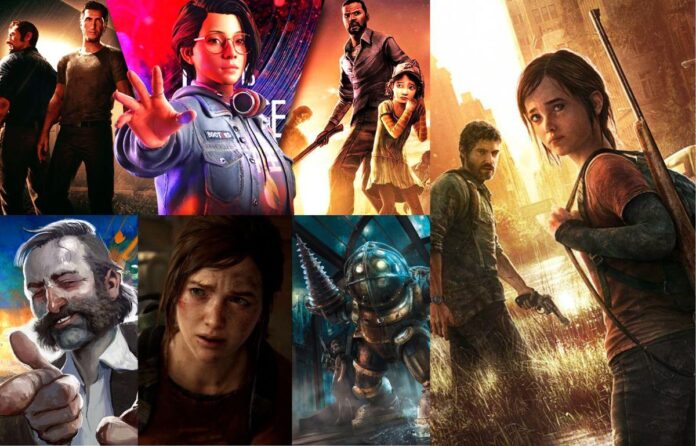Stories are the heart of many games. They help players care about what happens next. But not every player speaks the same language. That’s why many developers now use gaming translation services to reach players in other countries.
When stories are told well in every language, players feel included. They connect with the game. They feel like the story was made just for them. In games where choices matter, clear translation is even more important.
In this blog, we will look at how good translation shapes interactive stories. You will see how it helps players feel closer to the game and understand the story better.
Interactive Storytelling Means Players Shape the Plot
Some games let players change the story. These games often offer choices. Each choice leads to a different outcome. This is called interactive storytelling.
The game might ask, “Do you help your friend or leave?” Your choice may change what happens next. This builds strong emotions. Players become part of the world. They don’t just watch, they decide.
When these choices are translated clearly, the story still works. The tension, drama, and emotion all stay. But if the meaning gets lost, players can feel confused. They might pick an option they didn’t mean to.
So, every word in these moments must be accurate and easy to understand.
Dialogue Must Feel Real in Every Language
In interactive games, dialogue plays a big role. Characters talk, argue, joke, or cry. These lines shape the story and build each character.
A poor translation can make characters feel flat or odd. A smart hero might sound silly. A serious moment might sound funny. This breaks the mood.
Good translators match tone, timing, and culture. If a character uses local slang in English, the translator finds something that feels local in the new language too. The goal is to make the scene feel real to players everywhere.
Small mistakes can change the feel of a scene. That’s why every line must be handled with care.
Choices Must Reflect True Meaning
Interactive games often give players a list of choices. Each one may be short, like “Agree,” “Refuse,” or “Stay silent.” But behind those words is meaning.
In some languages, these words have many levels of feeling. “Refuse” can be polite or rude, depending on how it’s said. If the translated version picks the wrong tone, the story might move in a direction the player did not expect.
This can ruin the flow. Players may feel lost or tricked. They might even stop playing.
So, translators need to look at the story behind each word. They must ask, “What is the player really saying here?” Then they must pick words in the new language that match that meaning.
Pacing and Mood Need Special Care
Interactive stories often change speed. Some parts are slow and deep. Others are fast and tense. This balance helps players stay engaged.
When translating, it’s important not to change the pace. If the new version adds too many words, it may slow things down. If it cuts too much, the moment might feel rushed.
Mood also matters. A sad scene must stay sad. A funny moment must stay light. Word choice affects how a scene feels.
That’s why translation must follow the rhythm of the original game. It should match the pace, length, and tone of each scene.
Cultural Hints Must Be Adapted, Not Erased
Many games use culture to make the story feel real. A character may speak about food, family, or holidays. These hints help build the world.
But sometimes, these details don’t make sense in other cultures. If not handled well, they may confuse players or make them feel left out.
A smart translation keeps the meaning but changes the example. If a character says, “It’s as cold as a London winter,” a translated version might say, “It’s as cold as a Tokyo winter,” depending on the audience.
This way, the local player still understands and feels part of the game. The story stays strong across cultures.
Voice and Subtitles Must Work Together
Many interactive games have voice acting. Characters speak their lines out loud. Subtitles often appear on the screen at the same time.
Both must match. If the voice says one thing and the subtitle says another, it breaks the story. Players may not know which to follow.
Also, the voice actor must sound like the character. A brave hero should not sound weak. A scared child should not sound bold. In each language, the voice must match the role.
A good translation company works with both words and sound. They help find voice actors who fit. They make sure the subtitles are on time. They test everything to make sure the story feels smooth.
Branching Paths Need Consistent Language
In some games, players revisit choices. One path may lead to a new mission. Another may skip it. But all paths must still tell one full story.
If different parts use different words for the same thing, players get confused. For example, if one scene calls the villain “King Zor” and another calls him “Zor the Great,” players may think these are two people.
This happens when translators don’t keep notes or check the full story. That’s why all parts of the game must use the same names, terms, and styles.
Good translation teams create guides. These guides list key terms and how to use them. This keeps the story clear no matter which path players choose.
Player Emotions Depend on Clarity
In story-driven games, players feel many things, joy, fear, anger, hope. These feelings come from words. If the story is clear, players stay connected.
But unclear words break the link. A joke that doesn’t land feels odd. A warning that’s too soft feels fake. A loving line that sounds dry may ruin a big moment.
That’s why the translation must be more than correct, it must feel alive. Every line must help the player feel something. When done well, this builds deep bonds between player and game.
Character Growth Must Stay True
In long games, characters grow. A shy person may become brave. A cold warrior may learn to care. Players watch this growth and feel proud.
The translator must show this change in every line. Early in the game, the hero may speak with doubt. Later, they speak with strength.
If this change is missing in the translation, players miss the story’s point. The growth feels flat.
This means the translator must follow the character’s path. They must make sure the voice changes as the story goes on. It’s not just about what’s said. It’s about how it’s said over time.
Final Words!
Interactive games let players become part of the story. But this only works if the story makes sense in every language. Good translation brings the story to life for everyone. It keeps the meaning clear, the tone right, and the choices fair.
When players can feel the same emotions, no matter where they live, the game becomes truly global. And that’s what makes storytelling in games powerful.


